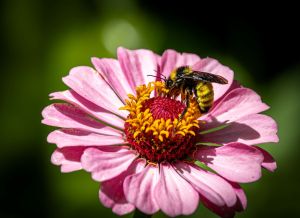Maypops are good for beauty, fruit, juice — and butterflies
Published 6:15 am Wednesday, July 11, 2018

- Greg Grant
Our common native passion vine, (Passiflora incarnata) or maypop, is a relic from our tropical days millions of years ago. It is a member of a tropical fruit family and serves as the host for the pretty, orange, gulf fritillary butterfly, a tropical holdover as well. Many other beautiful passion vines, including the edible passion fruit (Passiflora edulis), are cold tender and will freeze in all but the coastal parts of the South.
Passion vines got their name from early Spanish priests who weaved each part of the amazingly intricate flowers into the story of the passion of Christ. And intricate they are. At least in the South, I know of no other flower with such an array of floral parts.
Trending
The maypop has beautiful, fragrant, fringed, pale lavender flowers highlighted with purple, green and white. There are occasionally plants with all white flowers. It blooms repeatedly throughout the warm season, with the delicate flowers giving way to green goose-egg shaped fruit. When the fruit start to turn color, shrivel and look like they are going to ruin, they are ready for harvest. Around each seed (somewhat like a pomegranate) the clear pulp has a wonderful bit of tropical juice and flavor. One can either eat them as is (spitting out the seed) or press them into a sieve to retrieve the precious juice. A little juice goes a long way. I’ve made “passion-ade” with sugar and water as well as adding it to Kool-Aid to truly make it tropical punch. Some also harvest and dry the flowers and leaves to make a soothing tea.
Maypop vines occur in pastures and along the edge of woods and roadsides and will either climb trees, fences and other structures or sprawl about the ground as they do in open prairies. The maypop is virtually indestructible; but performs best in full sun with good drainage. Propagation is from seed or cuttings. Once you’ve located a plant, the real show starts.
All summer long, showy Gulf fritillary butterflies dance about the vines, looking for leaves to lay their solitary golden yellow eggs on. The gray and orange larva feed exclusively on passion vine foliage before becoming a chrysalis nearby. They can occasionally eat all the foliage, but as maypops are very vigorous, they quickly recover to host even more. Maypop vines sucker profusely. I think it’s an evolved mechanism to stay one step ahead of the Gulf fritillaries. The chase is certainly worth watching. The plants also have nectar glands at the base of each leaf that I believe are there for attracting ants to help keep the caterpillars in check. Still yet, assassin bugs can be found stalking the plants occasionally carrying skewered young caterpillars. The whole process is like a PBS nature show and very entertaining for both young and old alike.
Greg Grant is the Smith County horticulturist for the Texas A&M AgriLife Extension Service. He is co-author of “Heirloom Gardening in the South.” You can read his “Greg’s Ramblings” blog at arborgate.com or read his “In Greg’s Garden” in each issue of Texas Gardener magazine (texasgardener.com). More science-based gardening information from the Texas A&M AgriLife Extension Service can be found at aggie-horticulture.tamu.edu.







